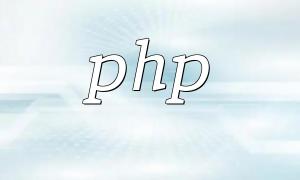When writing PHP code, comments are an essential part of the development process. They not only help developers understand the functionality of the code but also improve its maintainability. This article will explore how to use comments in PHP to enhance code readability, with practical code examples.
Single-line comments are used to explain or describe a single line of code. In PHP, single-line comments begin with double slashes (//) and end at the end of the line. Here's an example:
// This is an example of a single-line comment$name = "John"; // Set the variable $name to the string "John"With single-line comments, we can succinctly explain the purpose of each line of code, allowing other developers to quickly understand its function.
Multi-line comments are useful for providing a detailed explanation of a block of code. In PHP, multi-line comments start with /* and end with */. Here's an example:
/*// This is an example of a multi-line comment// The following code calculates the sum of two numbers and stores the result in the $total variable*/$num1 = 10;$num2 = 20;$total = $num1 + $num2;Through multi-line comments, we can provide more detailed explanations of blocks of code, helping other developers understand the logic more clearly.
For functions and methods in PHP, we can use specific comment formats to describe their parameters, return values, and functionality. This not only enhances code readability but also helps developers understand how to use the function properly. Here's an example of function comments:
/*** Calculate the sum of two numbers* @param int $num1 The first number* @param int $num2 The second number* @return int The sum of the two numbers*/function sum($num1, $num2) { return $num1 + $num2;}These comments clearly indicate the function's input and output, making it easier for other developers to use the function in their code.
Class comments are similar to function comments but are typically more detailed, describing the class's properties, methods, and usage examples. This kind of comment helps developers quickly understand the purpose and structure of a class. Here's an example:
/*** User class* This class encapsulates user information and related functionality*/class User { /** * @var string Username */ private $username; /** * Constructor * @param string $username Username */ public function __construct($username) { $this->username = $username; } /** * Get the username * @return string The username */ public function getUsername() { return $this->username; }}Class comments allow developers to understand the structure and functionality of a class at a glance, especially in collaborative projects where multiple developers work on the same codebase.
Comments play a crucial role in PHP development. By using comments appropriately, developers can significantly improve code readability and maintainability. Whether using single-line comments, multi-line comments, function comments, or class comments, a well-commented codebase is easier to understand, maintain, and collaborate on.









